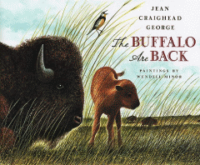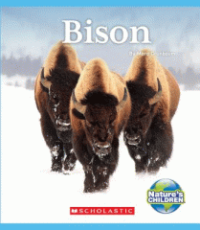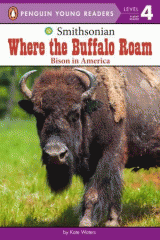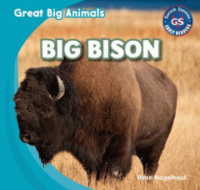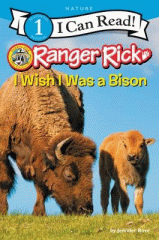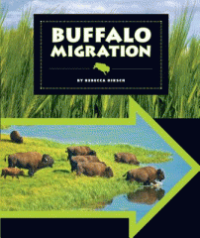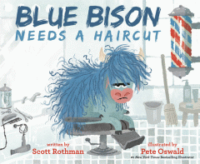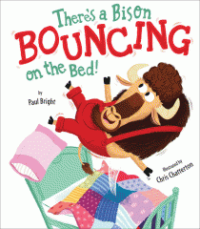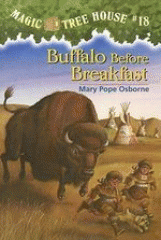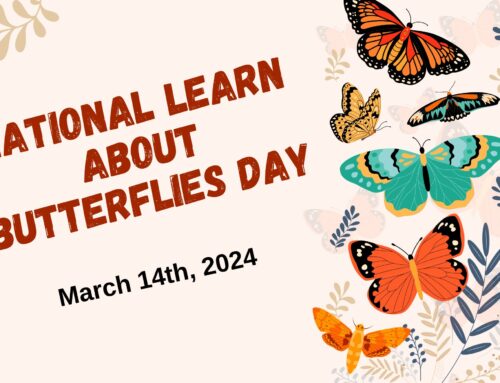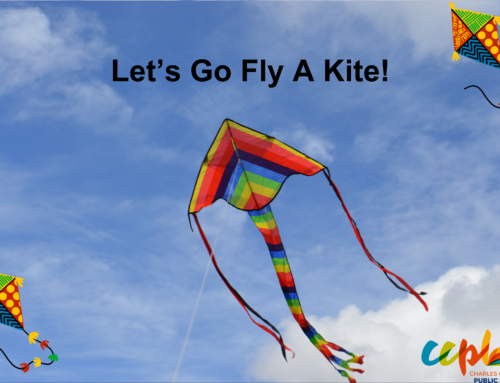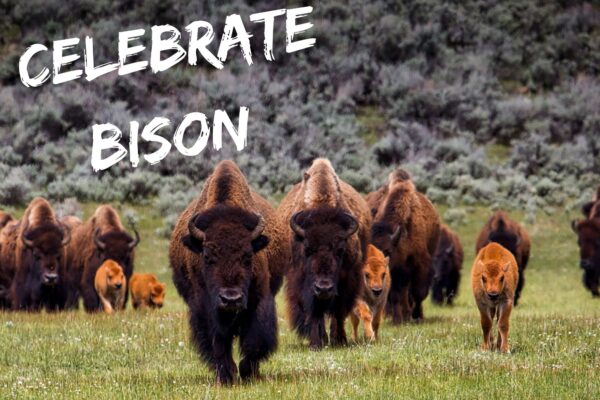
In the late 1800s, the American Bison had almost been hunted to extinction by American settlers, but today, they are a thriving part of the Great Plains ecosystem. In 1883, Teddy Roosevelt traveled to what was then known as the Dakota Territory to hunt Bison but fell in love with the West and developed a conservation mindset. In 1905, with the help of William Hornaday, he formed the American Bison Society. Saturday, November 4th, is National Bison Day. Celebrate the fantastic creatures that are Bison with these fun facts and exciting books.
Bison Facts
Check out these books!
The buffalo are back by Jean Craighead George
In the mid-1800s, seventy-five million buffalo roamed in North America. In little more than fifty years, there would be almost none.” The death of the buffalo and the settlers’ farming and ranching practices endangered the prairie, as drought made the farmland crumble to dust. To help repair the land, the buffalo had to be saved.
American bison by Grace Hansen
An introduction to the American bison’s physical characteristics and behavior.
Bison by Mara Grunbaum
Did you know that bison are North America’s largest mammals or have lived in Yellowstone since prehistoric times? Learn fascinating facts like these and more all in the pages of this book!
Where the buffalo roam : bison in America by Kate Waters
The American bison (buffalo) is one of the most recognizable North American mammals. It is the official national animal of the United States, where you’ll still find them roaming.
Bison by Quinn M. Arnold
A kindergarten-level introduction to bison, covering their growth process, behaviors, the forests and grasslands they call home, and such defining features as their shaggy fur.
Big bison by Ryan Nagelhout
Developed by literacy experts for kindergarten through grade three students, this book introduces bison to young readers through leveled text and related photos.
I wish I was a bison by Jennifer Bové
Explore the lives of bison with Ranger Rick in this beginning reader with full-color photos of bison in the wild! What if you wished you were a bison and became one? Could you talk like a bison with grunts and snorts? Could you eat like a bison, chomping lots and lots of grass? And would you want to? Find out! Ranger Rick explorers can learn about bison in this reader full of fascinating facts, vivid wildlife photographs, a Wild Words glossary, and a hands-on activity that teaches kids how to play Bison Frisbee!
Buffalo migration by Rebecca Hirsh
Describes the life of the American bison, commonly called buffalo; discusses their migration, its purpose, and its route; and lists threats buffalo may face in their lives and on their migration.
Blue Bison needs a haircut by Scott Rothman
Blue Bison prides himself on always looking clean and neat, so when he goes for a haircut and discovers everywhere is closed, he is distraught, but his little sister Bubble Gum Bison and her utterly ridiculous idea save the day.
There’s a bison bouncing on the bed! by Paul Bright
Bump! Bump! Bump! Someone’s been bouncing on the bed, and now it’s broken. Was it you?
Buffalo before breakfast by Mary Pope Osborne
The magic tree house takes Jack and his sister Annie to the Great Plains, where they learn about the life of the Lakota Indians.

